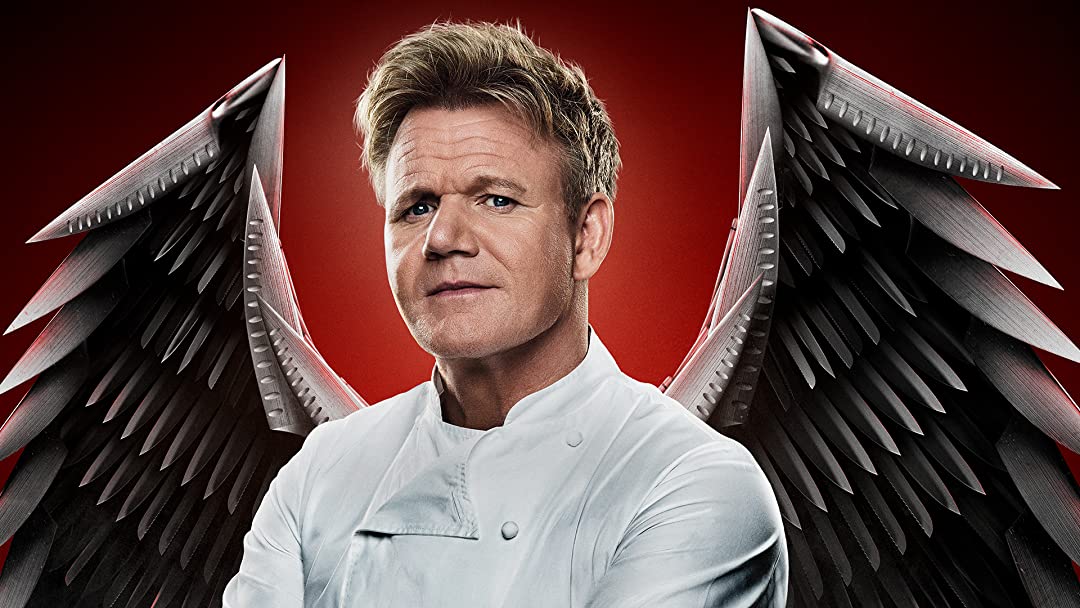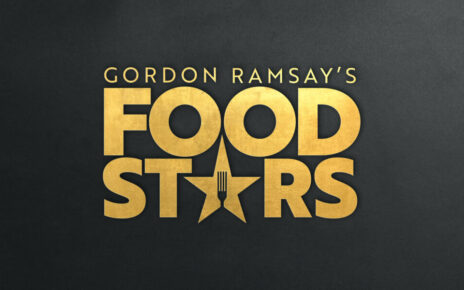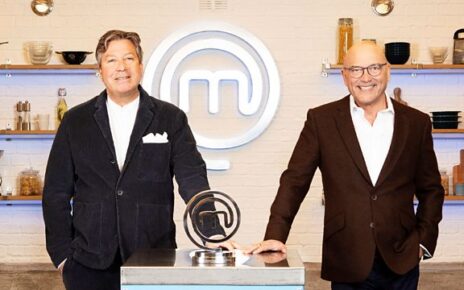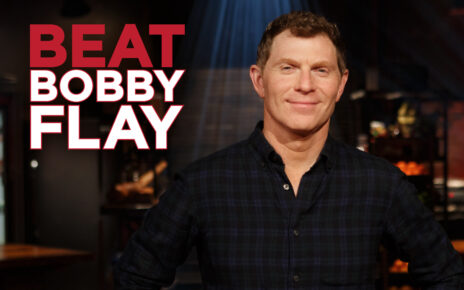Episode description
Citizens of Hell’s Kitchen
Individual challenge: Each team was tasked with making crab cakes, omelets, chicken & waffles, and steak & eggs for a dining room full of recently naturalized U.S. citizens. On the red team, Raneisha undercooked chicken, but rebounded and had no further issues. On the blue team, Mattias undercooked two steaks; he was also able to rebound and serve the diners without any further issues. The men narrowly won the challenge; their reward was enjoying a poolside lunch atop a private resort while the women had to pick up confetti from the naturalization ceremony and prep the kitchens for service. Melissa declined to use her punishment pass.
Punishment/reward: During the women’s punishment, Melissa claimed the kitchen was free of confetti when there was a loose strand atop a table; sous-chef Christina responded by dumping one of the bags the women had filled onto the floor for the women to pick up once again. The men enjoyed the reward as a team without any infighting (aside from playful ribbing at the lunch table).
Service: Victor Cruz and Bobby Berk sat at the blue and red chef’s tables, respectively. Also attending are Alaska and Liam Pace. In the blue kitchen, Mattias’ meat issues continued when he repeatedly undercooked steaks and chicken, sometimes burning the outer edge on one side. Jermaine sent up overcooked wellingtons, and Brad ran around the kitchen aimlessly once his appetizers were complete in search of a new task; eventually, Ramsay got fed up and kicked the blue team out after repeated failures. In the red kitchen, Claudia served raw lobster tail for the risotto; she was able to refire it properly, but later fell behind with Donya on fish entrees for Liam Pace’s table. Carmen continued to struggle on proper communication by calling out ticket times that were not agreed upon by the rest of the team. Raneisha undercooked meat twice, and when a meeting in the store room did not improve service quality, Ramsay also kicked out the red team and both teams were named joint losers.
Elimination: The red team nominated Donya and Claudia while the blue team nominated Mattias and Brad. Ramsay was perplexed by Brad and Donya’s nominations, even going so far as to ask Donya whether she felt her nomination was fair, to which she believed Carmen should have been nominated instead. After sending the two of them back in line, Ramsay ultimately eliminated Claudia, believing she did not exhibit enough consistency or professionalism to win.
Ramsay’s comment: “Claudia can speak four languages. But cooking definitely isn’t one of them.”
Hell’s Kitchen Season 21
Hell’s Kitchen Season 22
Episode 01 | Episode 02 | Episode 03 | Episode 04 | Episode 05 | Episode 06 | Episode 07 | Episode 08 | Episode 09 | Episode 10 | Episode 11 | Episode 12 | Episode 13 | Episode 14 | Episode 15 | Episode 16
Hell’s Kitchen US Show Summary
The U.S. version of Hell’s Kitchen follows the format of the UK version though the show is recorded and not performed live, nor is there audience participation in the elimination of chefs. Each season brings twelve to twenty aspiring chefs to Hell’s Kitchen, a modified warehouse in Los Angeles that includes the restaurant, dual kitchen facilities, and a dormitory where the chefs reside while on the show. Gordon Ramsay breaks the chefs into two teams most often based on gender, with women on the red team, and men on the blue, and are given a chef’s jacket with labels of that color. The chefs compete in these teams, barring any reassignments by Ramsay, until only five or six chefs are left, which they are brought into a single common team wearing black-labeled jackets, though they now compete individually to be one of the final two. Each episode typically includes one challenge and one dinner service, following which a chef is eliminated from the game.
In challenges, the teams or individual chefs are tasked with a cooking challenge by Ramsay. The type of challenges are varied, ranging from ingredient preparation, meal preparation, taste tests, and other challenges. The first challenge of each season is a signature dish cookoff, giving the chefs the opportunity to show Ramsay their cooking. Each season typically includes one or more challenges that allows teams to construct several dishes either for a banquet to be held the next dinner service or as part of designing their own menus. Other challenges typically include a “taste it, make it” task where chefs must try to recreate a dish Ramsay has prepared by taste only, and a taste-test challenge where chefs identify ingredients without sight or sound. The winner of the challenge is either determined by a scoring system set for that challenge, or based on Ramsay’s and guest judges’ opinions. The winning team or chef is typically rewarded with an activity away from Hell’s Kitchen and other potential prizes, while the losing team or chefs are forced to do a menial task, such as cleaning the kitchens, preparing a specific ingredient for the dinner’s meal, or having to prepare the food for both kitchens.
For dinner services, the chefs are expected to work their station (such as meat, fish, or garnish) on the kitchen line to prepare food in coordination with their teammates and to Ramsay’s high standards for quality and presentation during a dinner service for about 100 guests (volunteers for the show), with each diner expecting to receive an appetizer, an entree, and a dessert. The chefs are given menus and recipe books by Ramsay to study and memorize, which include some of Ramsay’s more difficult plates including risotto and Beef Wellington, and are given a few hours before each service to prep their ingredients. They are also given silverware sets that they get to keep, regardless of their progress. Ramsay demands that all orders for one course for a table go out together, and will send back entire orders if one item is improperly prepared, such as being over- or undercooked or not seasoned correctly. While the chefs are in two teams, Ramsay is assisted by two of his trusted sous-chefs, each monitoring one of the kitchens who will also demand the same standards. The sous-chefs shift to helping to fill available positions once the chefs are on a single black team. One such service in this time period allows each chef to run the pass as part of a quality-control test (i.e. spotting mistakes that are sent up by either Ramsay or one of his sous-chefs).
Ramsay desires to complete every dinner service, but poor kitchen performance by one or both teams will cause him to close one or both sides of the kitchen early, and send the team(s) back to the dorms. Once the dinner service is complete, Ramsay determines which team (if not both) is the losing team and informs them to come up with chefs to be nominated for elimination. This may be a task assigned to the “best of the worst” on the team, or may be a group consensus. Ramsay regroups the teams and hears out the nominations from the losing team(s). After giving these nominees the chance to defend themselves, Ramsay selects one to hand over their jacket and “leave Hell’s Kitchen”, later symbolically placing that jacket on an empty sharp hook below a picture of that chef, in a row in his office; the hook pokes a hole in the jacket and ignites that chef’s picture signaling their departure. Ramsay is free to ignore these elimination rules if he sees fit. He has frequently eliminated chefs during the middle of the service if their performance is abysmal, or may override the provided nominations with his own selection. If an eliminated chef has performed exceptionally well, he may allow that chef to keep their jacket as a token of their success up to that point, if he sees fit. At the end of each episode, as he is seen heading back to his office to hang up the eliminated chef’s jacket, there is a voice-over of him explaining his reasons for eliminating that chef. Often chefs will be taken out of the competition for medical reasons or they may leave on their own free will; though the latter is not encouraged, their wishes are ultimately honored.
Once two chefs remain, they are each given the opportunity to develop their own menu and lead a brigade of former competitors through a full dinner service on their own. In some seasons, this has included the opportunity to decorate half of the Hell’s Kitchen restaurant to their liking. Ramsay will assure that all menu items meet his standards for high cuisine, and will oversee the service to make sure the high quality standards he expects are retained but otherwise does not get involved, allowing the two remaining chefs to demonstrate their ability to run the line to him. Ramsay will use his observations, those from the diners, and other sources to make a decision on who is the winning chef. This process is announced by having the two chefs stand at two different doors from his office, and telling them to turn the door handle and open it; only the door of the winning chef is unlocked. The winning chef receives numerous prizes including the opportunity to work as the head chef or executive chef at a restaurant of Ramsay’s choosing, as well as a cash prize.




